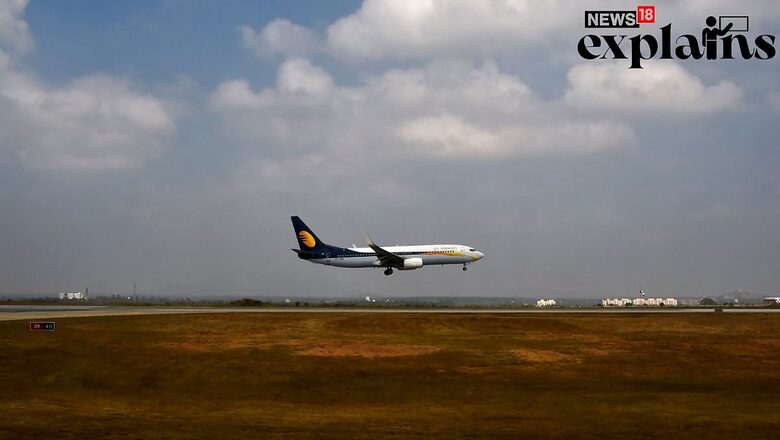
views
The Airports Authority of India is working towards reducing the lateral separation between two aircraft from 10 nautical miles (18 kilometres) to five (9.2 kilometres) to handle more air traffic.
According to a report in The Times of India, the AAI is planning to reduce the lateral separation between planes flying in the same direction and altitude to handle more air traffic amid increasing airport capacity.
The AAI, which provides air navigation services, has made a deadline of one year to achieve this objective after getting approvals from DGCA. Going forward with the plan, the Nagpur airspace will be treated as a test case to carry out the trial.
India’s Expanding Aviation Sector
In 2010, 7.9 crore people travelled in India. By 2017 the number doubled to 15.8 crore, and the figure is expected to triple to 52 crore by 2037. Union Aviation Minister Jyotiraditya Scindia recently said that India’s aviation market is expected to have 45.2 crore travellers annually by 2035, three times the current footfall of 4.5 crore.
Currently, the country has 131 operational airports including 29 international, 92 domestic, and 10 custom airports. India, the world’s fastest-growing aviation market, will have 230-240 airports, including heliports and water aerodromes by 2030.
To augment the airport infrastructure the government aims to develop 100 airports by 2024, under the UDAN Scheme and expects to invest $1.83 billion in the development of airport infrastructure by 2026. The fleet size of the Indian carriers is also expected to double from 700 by the end of this decade.
What Does the Plan Entail?
As per the plan, the distance between two flights will be reduced to five nautical miles to handle more air traffic. Apart from the lateral distance of 10 nautical miles between two planes flying in front of or behind one another, the aircraft must maintain a minimum vertical distance of 300 metres.
As per the TOI report, a top AAI official said that the rapid expansion of the aviation sector with the addition of new airports has made it mandatory for ATC services to catch up without compromising safety.
Delhi NCR and Mumbai are set to get their second airports by the end of next year. While Delhi will get Jewar International Airport or Noida International Airport, Mumbai Metropolitan Region will get Navi Mumbai International Airport near Panvel.
The training for the reduced distance between planes has been implemented in Nagpur and the city airport is expected to be ready for the reform in a year’s time. As per the plan, At present, Nagpur airport, which sees 1,500 aircraft overfly, may have to increase the flight operation for the trial. The Nagpur ATC airspace extends up to Bhopal in the north, Nanded in the south, Raipur towards the east and Aurangabad in the west.
Meanwhile, Goa already has a second airport and Bengaluru, Hyderabad and other cities are expected to expand their airport capacity significantly.
Delhi Gets Fourth Runway
India’s busiest and the world’s seventh-busiest airport, the Indira Gandhi International Airport (IGIA), has freshly inaugurated its fourth runway in July. Now, IGIA has become the first in the country to launch a fourth runway as well as an elevated taxiway.
The new runway—technically called 11L-29R—has a length of 4,400 metres and a width of 45 metres and is designed to handle widebody aircraft. Delhi Airport, operated by GMR Infra is the country’s largest airport and handles around 75-80 aircraft movements per hour.
The fourth runway comes as the country’s biggest airport will soon become one of the largest airports in the world at 109 million passengers per year, from the current 70 million passengers annually, Jyotiraditya Scindia said.




















Comments
0 comment